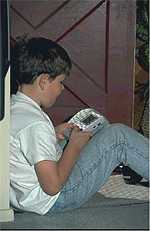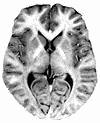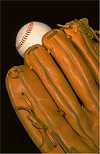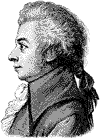|
Motor tics are involuntary
movements that most often
involve the face and neck muscles. Such movements include shoulder
shrugging, eye blinking, and nose twitching. They can also involve the
rest of the body, as in arm thrusting, leg kicking and jumping motions.
Motor tics usually occur in the same part of the body, but over time, tics
may fade from one part and appear in another part.
Motor tics can be classified as simple or complex. Simple tics are abrupt,
brief movements that occur in a single and isolated fashion, meaning that
no other tics are experienced at the same time. Examples of motor tics
are an eye twitch, a shoulder shrug, or a head jerk.
Complex tics are a series of movements. These can appear purposeful,
as if the person was coordinating them, but they are also involuntary.
Examples of a complex tic might be smelling objects (which might include
picking something up, bringing it to the nose, sniffing, then putting it
down) or mimicking movements made by others (called "echopraxia"). These
might be interpreted as purposeful. Examples of complex tics that would
not be seen as purposeful would be repeated kicking motions, or head
shaking with shoulder shrugging.
Vocal Tics Perhaps the most well known symptom of TS is the vocal
tic. Vocal tics include everything from a simple clearing of the throat,
sniffing noises, grunting or barking to the verbalization of words and
nonsensical sounds. Most people think of people with TS as having
outbursts that include obscene words. In fact, this occurs in only about
15% of TS cases. As with motor tics, vocal tics vary in
severity and frequently change (from grunts to words, for example) and may
become better or worse depending on circumstances.
As with motor tics, vocal tics can be separated into simple and complex
tics. Simple vocal tics include single sounds such as clearing the throat
or sniffing. Complex vocal tics include any expression
of words, including obscene words ("coprolalia"); repeating
the words of others ("echolalia"); or repeating their own words
("palilalia"-which is difficult for anyone to say). |


 Background
Background Fast Facts
Fast Facts Tics
Tics Diagnosis
Diagnosis Causes
Causes Medication
Medication Famous People
Famous People





 Jim Eisenreich, professional baseball player
Jim Eisenreich, professional baseball player Mahmoud Abdul-Rauf, professional basketball player
Mahmoud Abdul-Rauf, professional basketball player

![[email]](./gif/menue.gif)

